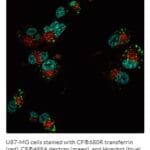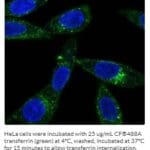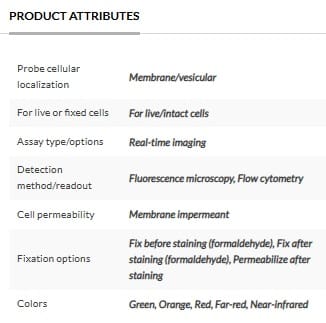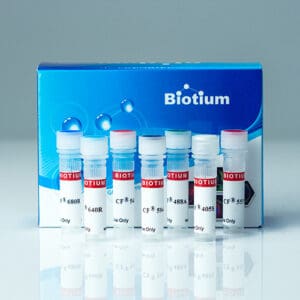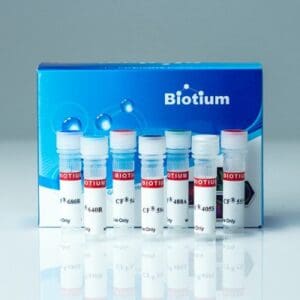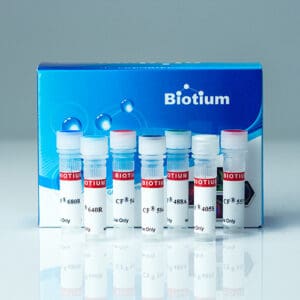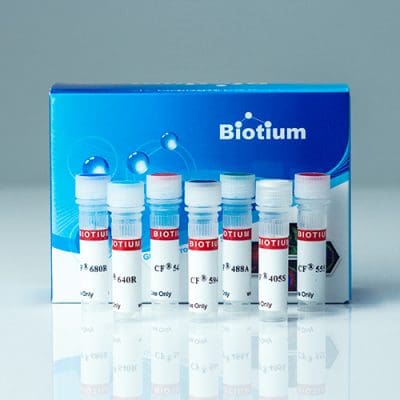
Labelled human transferrin is used for microscopic studies of the endosomal pathway and/or transferrin uptake studies.
| Name | SKU | Size | Availability | Vendor | Price | Order | |
Human Transferrin, CF®488A Conjugate |
00081 | 1mg | Generally 1-2 weeks from receipt of order | Biotium | Log in for pricing | ||
Human Transferrin, CF®543 Conjugate |
00082 | 1mg | Generally 1-2 weeks from receipt of order | Biotium | Log in for pricing | ||
Human Transferrin, CF®568 Conjugate |
00083 | 1mg | Generally 1-2 weeks from receipt of order | Biotium | Log in for pricing | ||
Human Transferrin, CF®594 Conjugate |
00084 | 1mg | Generally 1-2 weeks from receipt of order | Biotium | Log in for pricing | ||
Human Transferrin, CF®640R Conjugate |
00085 | 1mg | Generally 1-2 weeks from receipt of order | Biotium | Log in for pricing | ||
Human Transferrin, CF®680R Conjugate |
00086 | 1mg | Generally 1-2 weeks from receipt of order | Biotium | Log in for pricing | ||
Human Transferrin, CF®750 Conjugate |
00087 | 1mg | Generally 1-2 weeks from receipt of order | Biotium | Log in for pricing |
Product Description
Labelled human holo-transferrin is used for microscopic studies of the endosomal pathway and/or transferrin uptake. Biotium’s holo-transferrin conjugates are labelled with a selection our CF™ dyes, a series of next-generation fluorescent dyes developed at Biotium to have combined advantages in brightness, photostability, and water solubility compared to other fluorescent dyes.
- Choice of 7 CF® dyes from green to near-infrared
- Superior CF® dyes are bright, photostable, and water-soluble
- For endocytosis and transferrin uptake studies
Transferrin is a glycoprotein with homologous N-terminal and C-terminal iron-binding domains that binds up to two Fe(III) atoms for delivery to vertebrate cells through receptor-mediated endocytosis. After binding to its receptor on the cell surface, transferrin is rapidly internalized by invagination of clathrin-coated pits with formation of endocytic vesicles, the acidic environment favors dissociation of iron from the transferrin-receptor complex. Following the release of iron, the transferrin is then recycled back to the surface of the cell via the endocytic recycling pathway and released to bind more iron.
Superior CF® Dyes
Biotium’s next-generation CF® dyes were designed to be highly water-soluble with advantages in brightness and photostability compared to Alexa Fluor®, DyLight®, and other fluorescent dyes. Learn more about CF® Dyes.
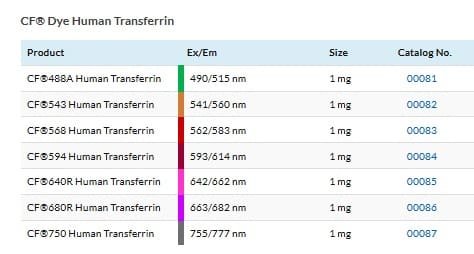
CF is a registered trademark of Biotium, Inc. Alexa Fluor, Texas Red, and DyLight are registered trademarks of Thermo Fisher Scientific.

